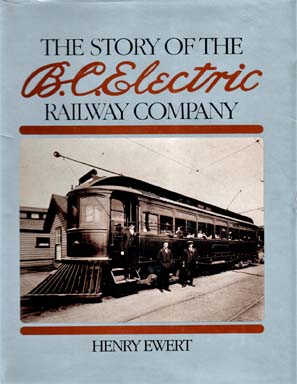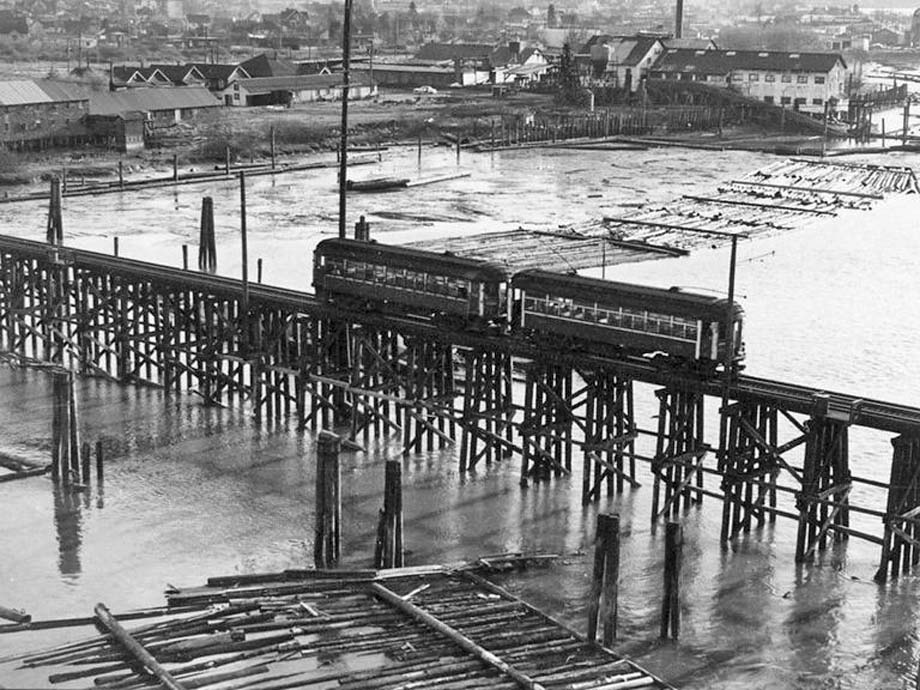
Vancouver British Columbia - In 1902 the Canadian Pacific Railway (CPR) built a railway trestle
across the north arm of the Fraser River.
It was the key link in a rail line between Steveston and Vancouver.
The CPR operated the Vancouver and Lulu Island railway for a couple of years before leasing the line to BC Electric in
1905, which ran an interurban passenger line there until 1958.
The trestle was then used by the CPR as part of an industrial line connecting Richmond and Vancouver.
But it doesn't seem to have been used since 2014, when a fire burnt part of the structure.
Univar Canada successfully sued the CPR in 2019 for not providing adequate rail service after the railway chose not to
repair the trestle.
Thursday another fire gutted the trestle.
"It's a real tragedy. Everything was covered in creosote in those days. It burns pretty good, I saw it last night
on the news," said former Richmond councillor Harold Steves.
Steves said the City of Richmond had long hoped to reopen the old interurban line, which connects to the Arbutus
corridor in Vancouver.
But the loss of the trestle makes it hard.
"Richmond continued to do all of its zoning bylaws along Railway Avenue based on reopening the railway line at
some time in the future, That stands today," said Steves.
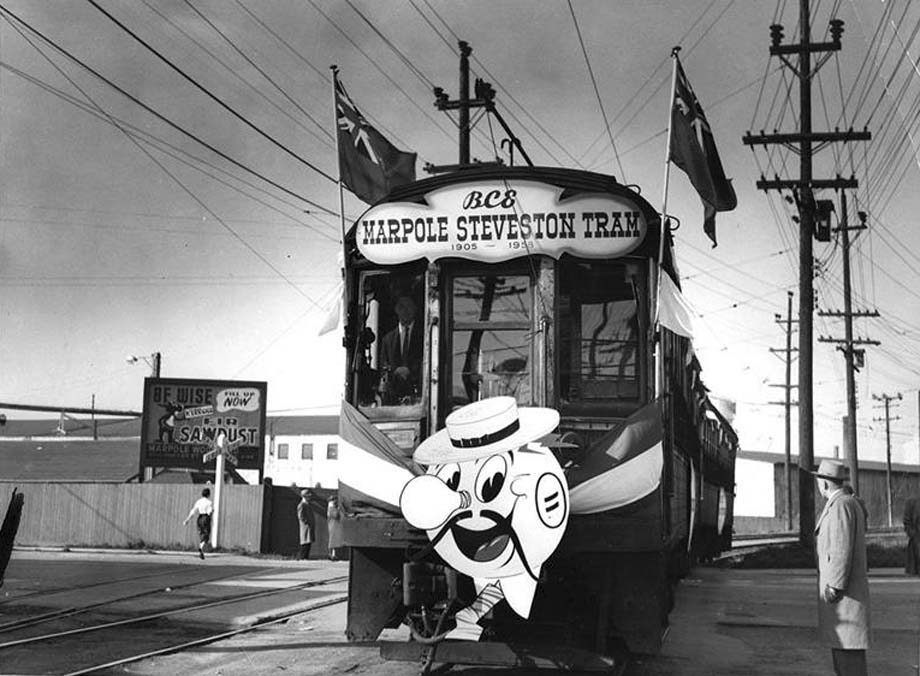
The 87-year-old Steves said the interurban was an integral part of the city when he was growing up.
It was used to travel within Richmond, and it only took 45 minutes to reach downtown Vancouver.
"That's why Richmond didn't want the tram shut down in the first place. It was a rapid transit, even though we
look at it as being old. At that time that was rapid transit," said Steves.
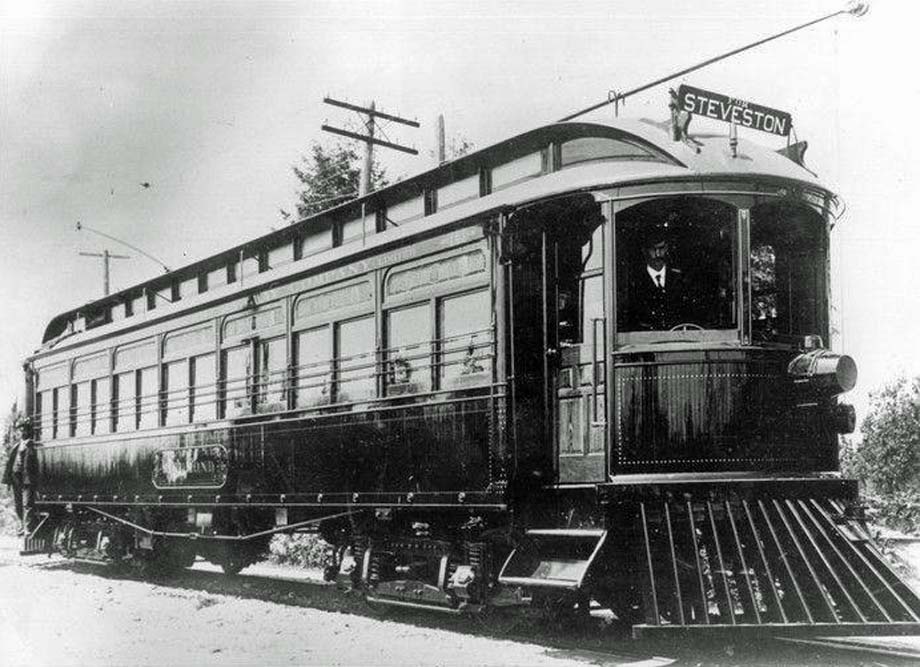
Streetcar expert Henry Ewert said the tram was nicknamed the Sockeye Special, because it went out to the fish canneries in
Steveston.
said the tram was nicknamed the Sockeye Special, because it went out to the fish canneries in
Steveston.
The wooden trestle was built very low over the river compared with modern crossings.
"It was a very solid trestle," said Ewert, who turns 87 in August.
"It was nothing like the trestle in North Vancouver for the streetcars over McKay Creek, which scared the
daylights out of you. This was low and solid, there was no kind of shake to it all."
"It was a swing span, so if a boat was coming through you had to open the span. But that didn't happen that
often, because it was mainly just tugboats towing log booms and that sort of thing up and down the river. A few fishing
boats, but no big shipping like the south arm," adds Steves.
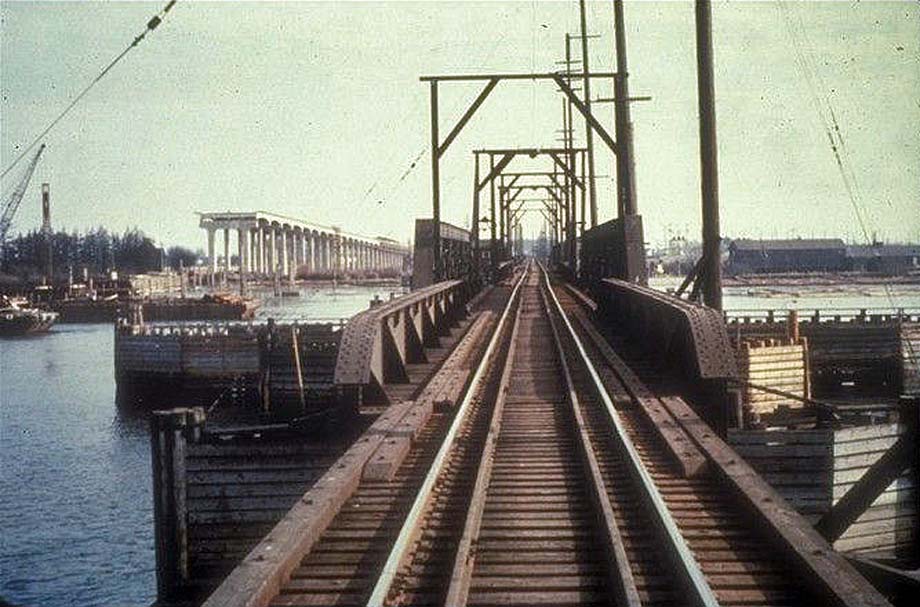
The interurban rail line closed when the Oak Street Bridge opened.
The last tram ran on 28 Feb 1958.
"My mother didn't have a car until 1958, because we always took the tram to Vancouver shopping at Christmas, and
things like that. A lot of people didn't have cars until they took the tram off. The buses never were fast, because
they meander through the city so much," said Steves.
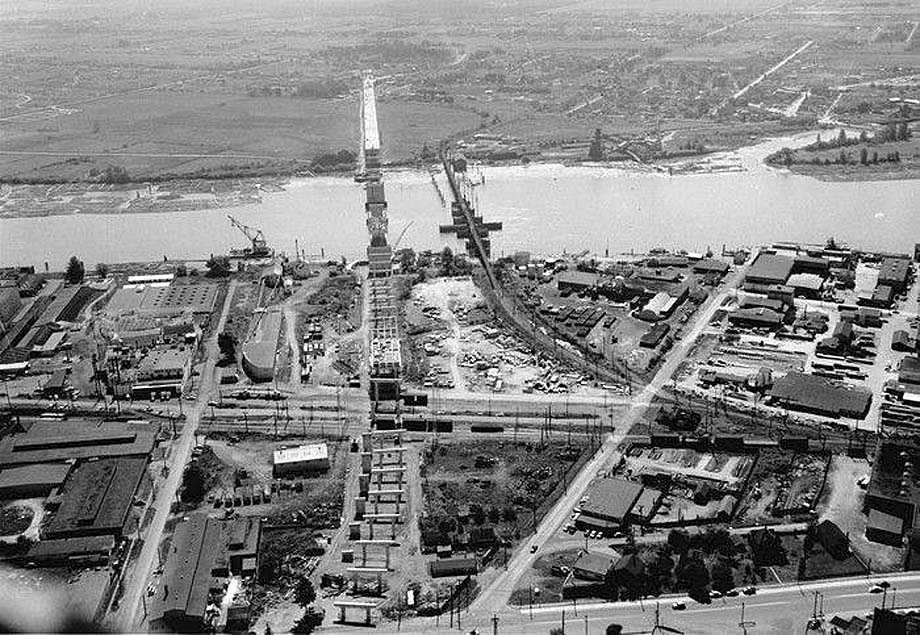
Canadian Pacific took over the line after the tram stopped.
The railway is now known as CPKC after combining with the Kansas City Southern railway in 2021.
In an email, Terry Cunha of CPKC said the industrial rail line that used the trestle was discontinued in
2022.
John Mackie.
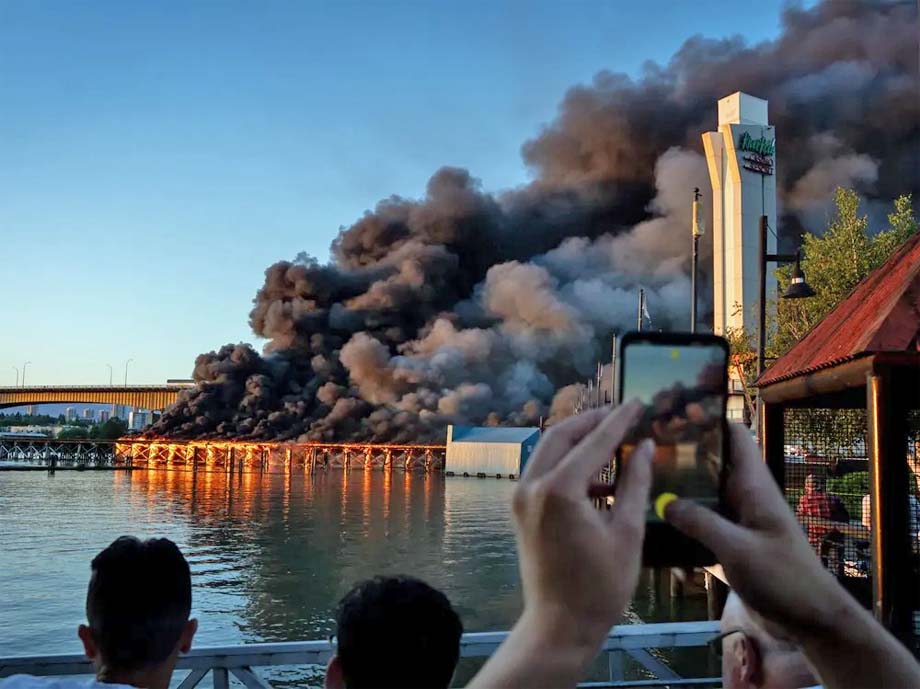
The Story of the B.C. Electric Railway Company
Henry Ewert
1986
Whitecap Books Ltd.
Hardcover
336 Pages $75 Amazon
This is the story about the BC Electric Railway Company that details the streetcar operations in four cities and
seven interurban routes for 68 years. The book includes many photos while the story covers a complete chronology of
all the BC Electric lines and operations.
(likely no image with original article)
(usually because it's been seen before)
provisions in Section 29 of the
Canadian Copyright Modernization Act.
